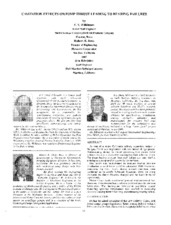| dc.description.abstract | As part of a major California refinery expansion project, a Delayed Coker was engineered with two heater charge pumps. Unfortunately, during the initial operations, both pumps failed within a few days of each other, causing the plant to be shut down. The thrust bearing damage from each failure was very similar, pointing to a pump and/or system design problem. One pump was instrumented to measure internal pressure distribution so axial forces could be calculated. With this instrumentation, the thrust loads, during normal operation, were confirmed to be axially balanced. However, when the pump cavitated, the thrust direction changed and the loads increased significantly. Under normal loads, nondirected pure oil mist performed fine. However, at the elevated loads, oil mist could not provide adequate lubrication. The inadequate lubrication condition caused increasing operating temperatures that resulted in decreasing viscosity, causing thermal runaway and ultimately bearing failure. | en |


